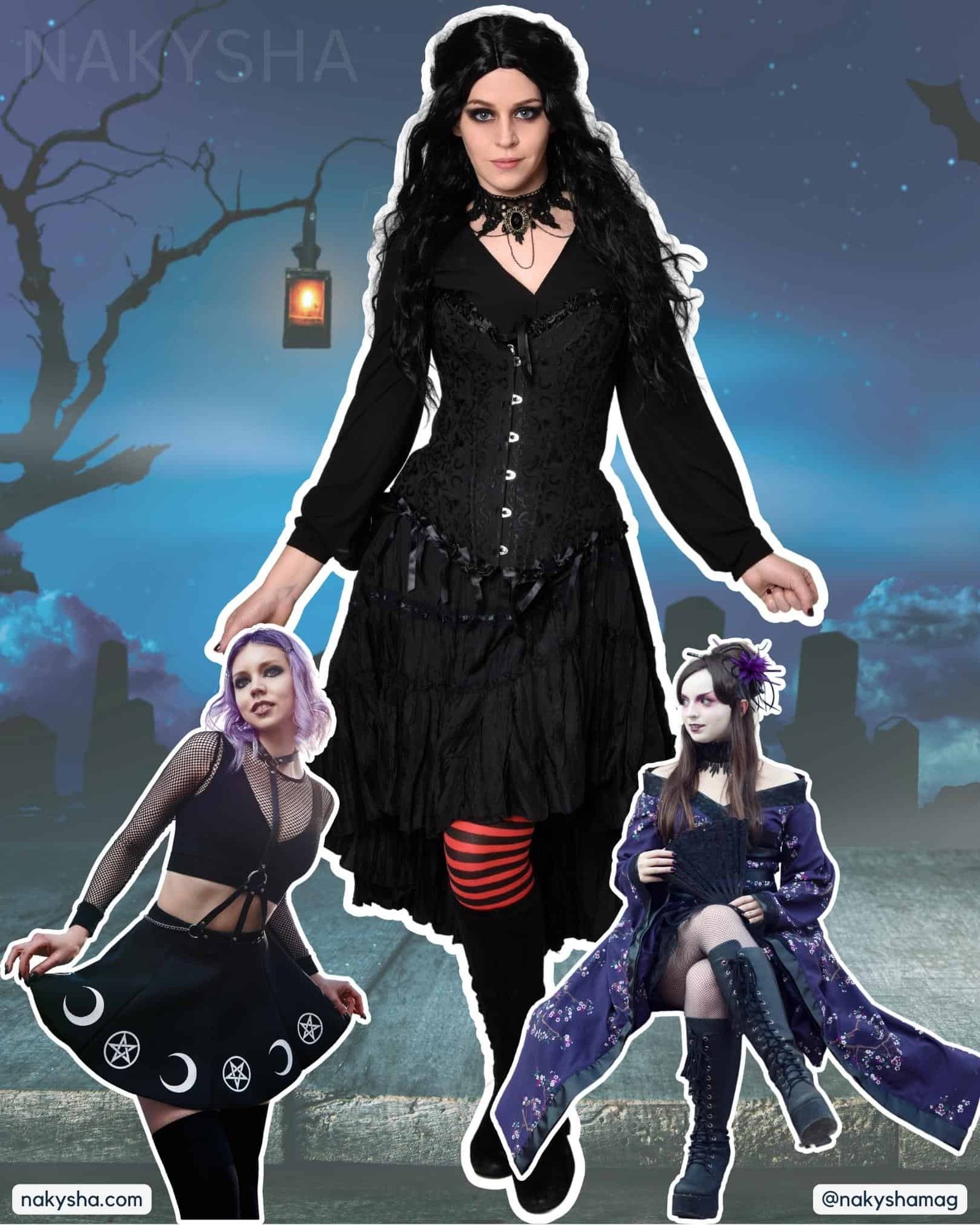Gothic fashion has highly influenced my view of today’s current trends. Dark colors like black and purple are popular for dresses, skirts, jackets, tops, and shoes.
Gothic fashion is a fashion style that embraces the dark and mysterious. It often incorporates punk, horror, and Victorian-era elements into its designs. The gothic style started in the late 20th century when young people started rejecting popular styles in favor of bold and risky ones.
Layering is a standard part of gothic fashion. For example, velvet overcoats with lace blouses or worn-in jeans with leather boots are common examples. Accessories such as chokers or crucifix necklaces also add to the overall look of gothic chic.
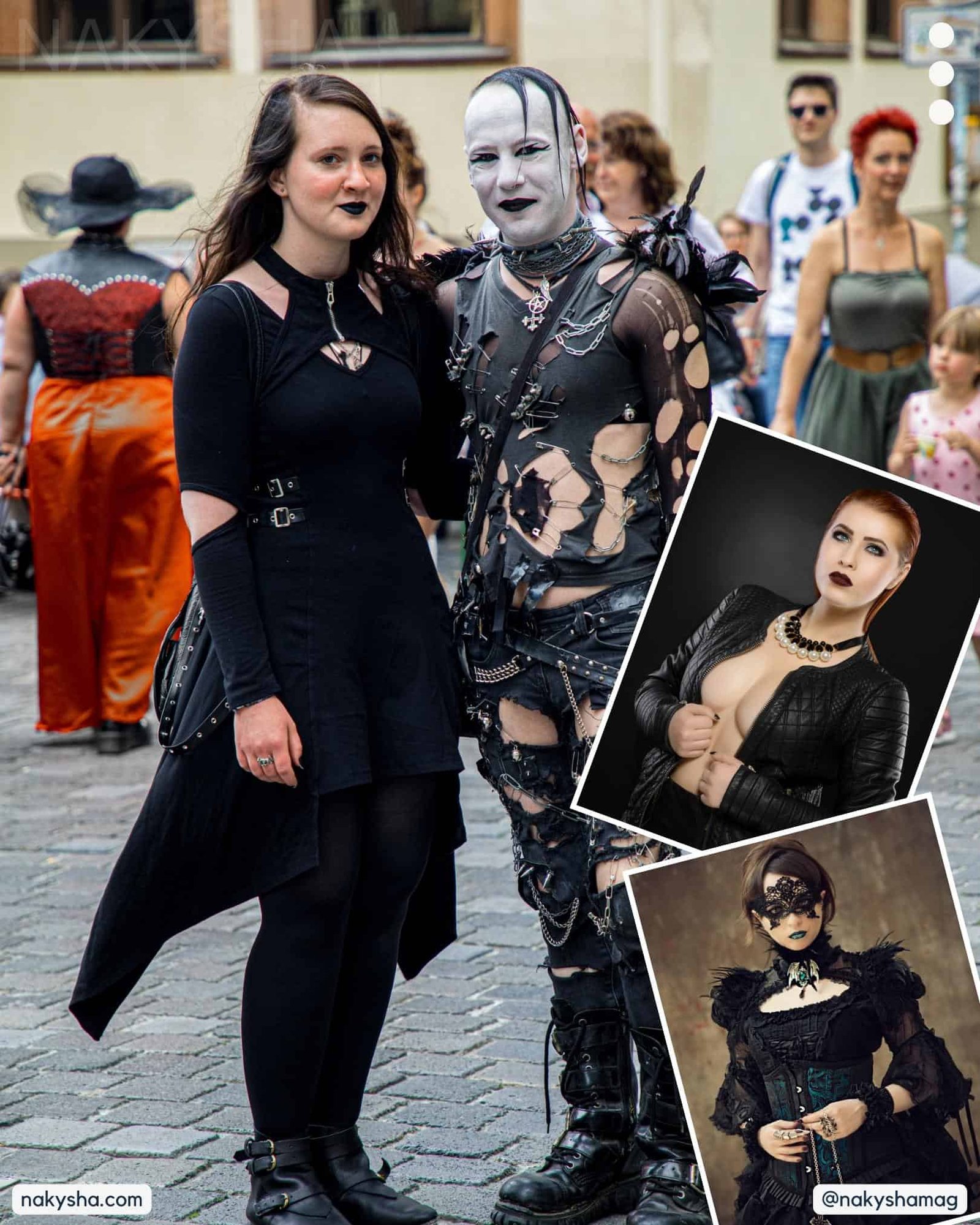
Even though gothic fashion has its roots in the music and culture of the gothic subculture, it has become a more mainstream style, with elements of gothic fashion showing up in both high fashion and streetwear.
What is Gothic Fashion?
Gothic fashion is a style of dress that emerged in the late 1970s and early 1980s, primarily associated with the gothic subculture. The style is characterized by dark and often dramatic clothing, emphasizing black and dark colors such as deep red, purple, and green.
Typical elements of gothic fashion include corsets, fishnet stockings, lace, leather, velvet, and other fabrics with a dark and textured appearance. Clothing may also feature elaborate detailing, such as ruffles, buckles, chains, and accessories like chokers, wristbands, and earrings.
In addition to its fashion elements, gothic culture often includes an interest in themes such as horror, the occult, and melancholy. As such, gothic fashion can often incorporate symbols and imagery associated with these themes, such as bats, skulls, and crosses.
The Meaning of Gothic Fashion
Gothic fashion refers to a style of dress typically characterized by dark, dramatic, and often macabre or medieval-inspired aesthetics. This subculture emerged in the late 1970s in the United Kingdom and has since spread worldwide, with its roots in punk, post-punk, and alternative music scenes.
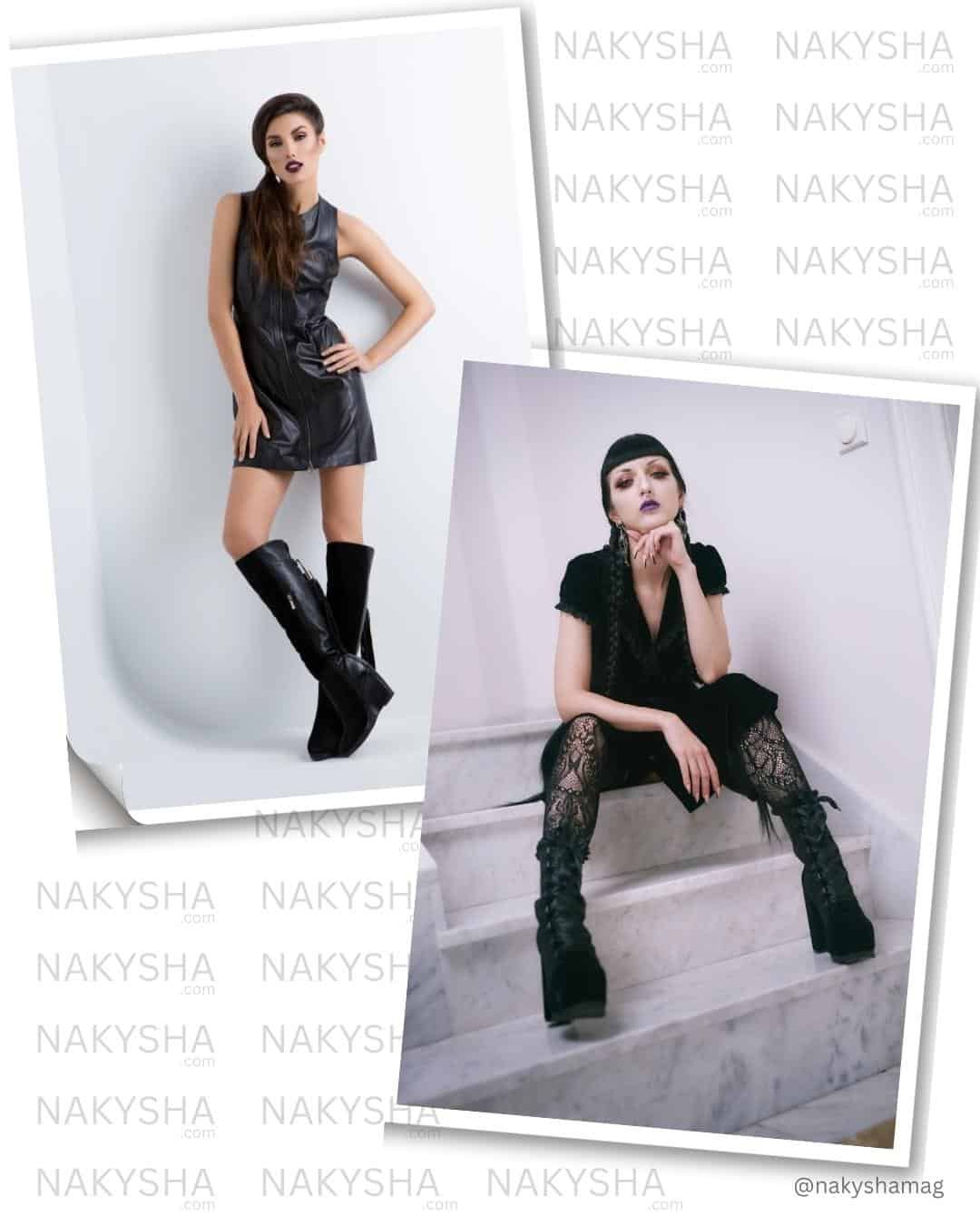
Gothic fashion typically features a lot of black clothing, leather, lace, and velvet, as well as corsets, fishnet stockings, and other provocative or intricate accessories. The style often incorporates horror, fantasy, and romanticism elements and may include influences from Victorian, Edwardian, or medieval fashion.
While the term “gothic” originally referred to a historical period of architecture and literature, the term has been adapted by the subculture to encompass a wide range of cultural expressions, including music, fashion, art, and literature. The gothic fashion style is often associated with a sense of individuality, rebellion, and non-conformity.
Types of Gothic Fashion
Several types of Gothic fashion have emerged over the years, each with its unique aesthetic and subcultural identity. Here are some of the most common types of Gothic fashion:
Traditional Gothic: This style is inspired by Victorian and Edwardian fashion and features black lace, corsets, high-collared blouses, and long skirts. This style is often associated with a romantic and dramatic look.
Cybergoth: This style incorporates elements of industrial, rave, and cyberpunk fashion and features neon colors, vinyl and PVC clothing, and bold accessories such as goggles, gas masks, and spiked jewelry.
Romantic Gothic: This style is inspired by literature and art of the Romantic era and features flowing skirts, soft fabrics such as velvet and lace, and delicate accessories such as cameos and lockets.
Punk Gothic: This style combines punk and Gothic fashion elements and features black leather jackets, studded accessories, and heavy boots or shoes.
Victorian Gothic: This style is influenced by the fashion of the Victorian era and features high-necked blouses, corsets, long skirts, and lace or ruffle detailing.
Lolita Gothic: This style originated in Japan and is inspired by Victorian and Rococo fashion. It features dresses with voluminous skirts, lace, and ribbons and is often accessorized with parasols, headdresses, and bows.
These are just a few examples of the many different types of Gothic fashion. Each type has its unique style, but they all share a love of darkness, drama, and individuality.
What is the Origin of Gothic Fashion?
The origins of Gothic fashion can be traced back to the Gothic architecture of the Middle Ages, characterized by its pointed arches, ribbed vaults, and flying buttresses. The term “Gothic” was initially used as a pejorative term to describe the architecture of the period. Still, it later came to be associated with the dark, brooding aesthetic now associated with Gothic fashion.
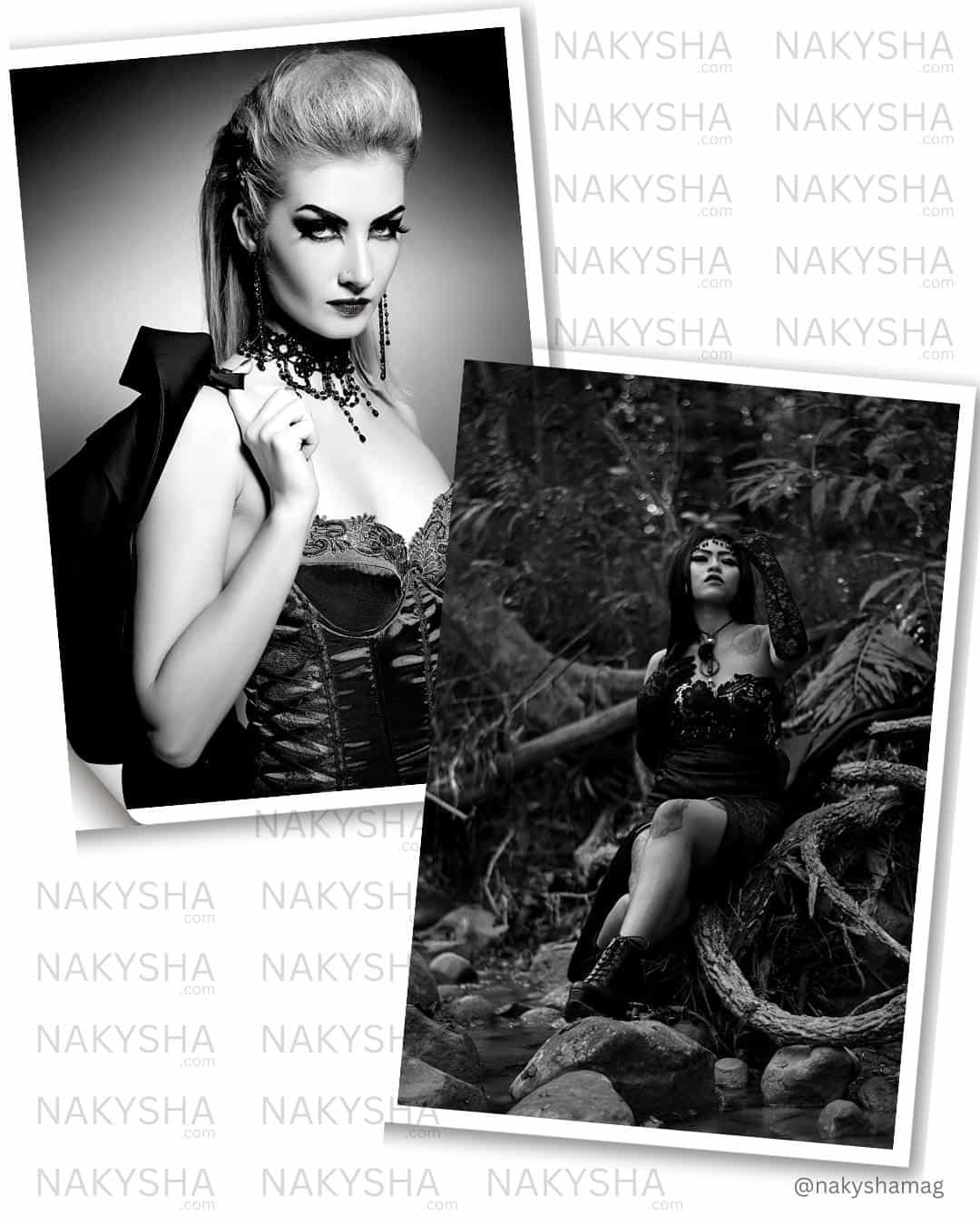
In the 1980s, Gothic fashion emerged as a subculture in the United Kingdom, with bands like Siouxsie, Banshees, and The Cure influencing the style. Gothic fashion was characterized by its dark and dramatic clothing, focusing on black, lace, leather, and velvet. Accessories such as crucifixes, chokers, and heavy boots also became popular.
Over time, Gothic fashion has evolved and incorporated elements from other subcultures, such as punk, industrial, and steampunk. Today, Gothic fashion remains popular among those who embrace its dark and romantic aesthetic, with new trends and styles constantly emerging.
The Sources of Inspiration
The Gothic fashion style has a variety of sources of inspiration.
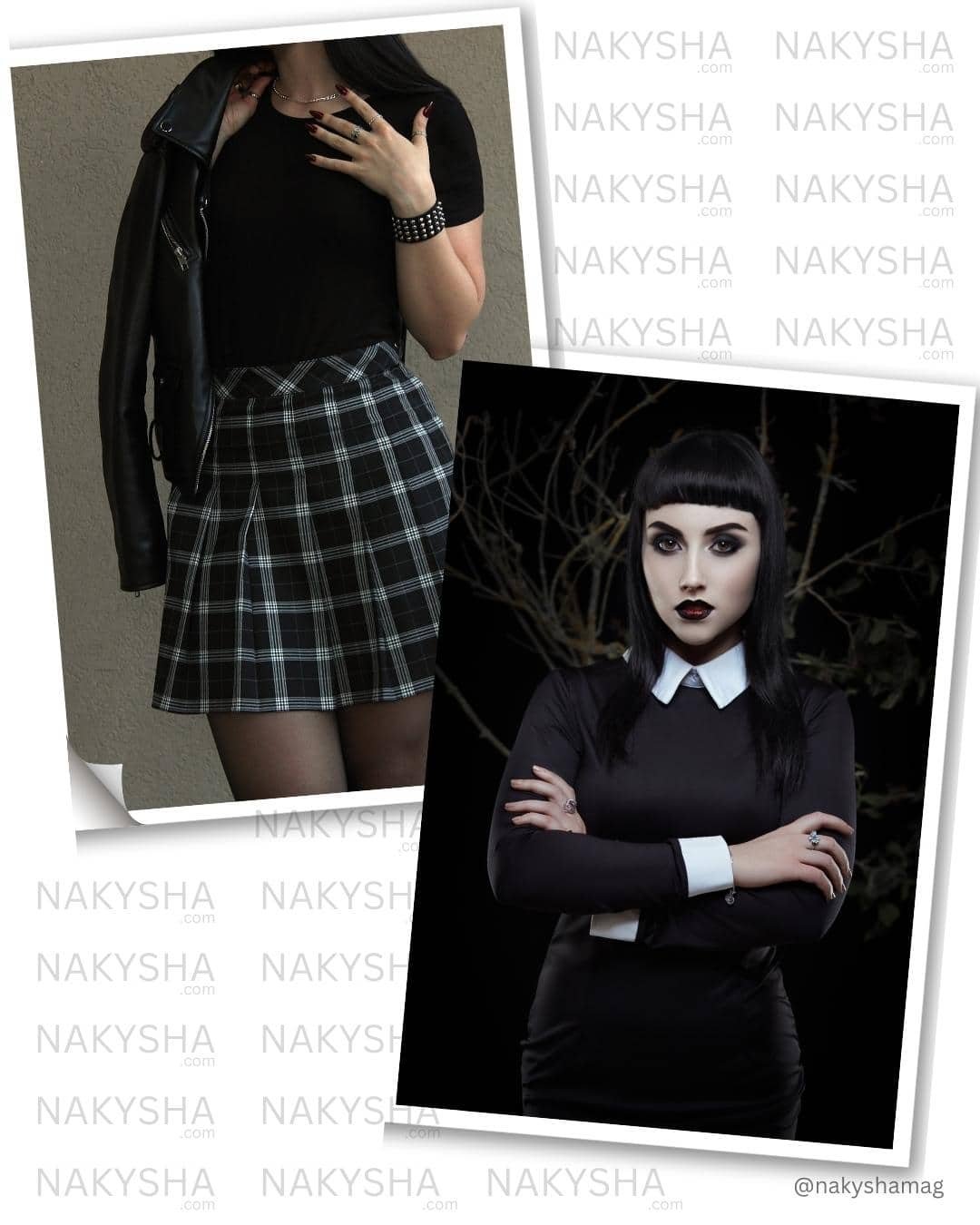
Some of these sources include:
Gothic Architecture: The intricate and ornate details of Gothic architecture, which were popular during the Middle Ages, have significantly influenced Gothic fashion. The pointed arches, elaborate tracery, and carved stone gargoyles often seen in Gothic buildings have inspired many Gothic fashion designers.
Victorian and Edwardian Era: The Victorian and Edwardian eras spanned from the mid-19th century to the early 20th century and have also significantly impacted Gothic fashion. During this time, dark colors, intricate lace, and ornate embellishments were popular which have been incorporated into Gothic fashion.
Romanticism and Horror Literature: Gothic fashion has also been influenced by Romanticism and horror literature, such as Mary Shelley’s “Frankenstein” and Bram Stoker’s “Dracula.” These stories often featured dark, brooding characters and eerie settings, reflected in Gothic fashion through dark colors, leather, and chains.
Punk Subculture: The punk subculture of the 1970s and 1980s also influenced Gothic fashion. The rebellious, anti-establishment attitude of punk rock has been reflected in Gothic fashion through studs, spikes, and other metal hardware.
Pop Culture: Gothic fashion has also been influenced by popular culture, including movies, TV shows, and music. For example, the Gothic look of Tim Burton’s films, such as “Edward Scissorhands” and “The Nightmare Before Christmas,” has inspired many Gothic fashion designers.
Popular Gothic Fashion Designers
Many talented Gothic fashion designers have made a name for themselves. Some of the most famous Gothic fashion designers include:
- Alexander McQueen: McQueen was a British fashion designer known for his avant-garde and darkly romantic designs. He was one of the pioneers of Gothic fashion, and his designs often incorporated elements such as lace, leather, and corsets.
- John Galliano: Galliano is a British fashion designer who has worked for major fashion houses such as Givenchy and Dior. His designs often feature dramatic silhouettes, ornate embellishments, and intricate lacework, making him a popular choice among Gothic fashion fans.
- Vivienne Westwood: Westwood is a British fashion designer known for her punk and Gothic-inspired designs. She has been a significant influence in the Gothic fashion movement since the 1970s, and her designs often feature corsets, tartan, and other edgy elements.
- Gareth Pugh: Pugh is a British fashion designer known for his avant-garde designs that often incorporate Gothic elements. His designs are often dramatic, focusing on sculptural shapes and unusual fabrics.
- Rick Owens: Owens is an American fashion designer known for his minimalist, edgy designs that often incorporate Gothic elements. His designs often feature dark colors, leather, and asymmetrical silhouettes.
- Yohji Yamamoto: Yamamoto is a Japanese fashion designer known for his avant-garde and edgy designs that often incorporate Gothic elements. His designs often feature voluminous shapes, asymmetrical hemlines, and dramatic draping.
These are just a few examples of the many talented Gothic fashion designers who have made a name for themselves in the industry.
Why is Gothic Style Still Popular?
Gothic fashion offers a distinctive, alternative look that allows individuals to express their individuality and creativity. The Gothic style is often characterized by dark clothing, dramatic makeup, and accessories such as leather, chains, and spikes, which can create a unique and striking appearance.
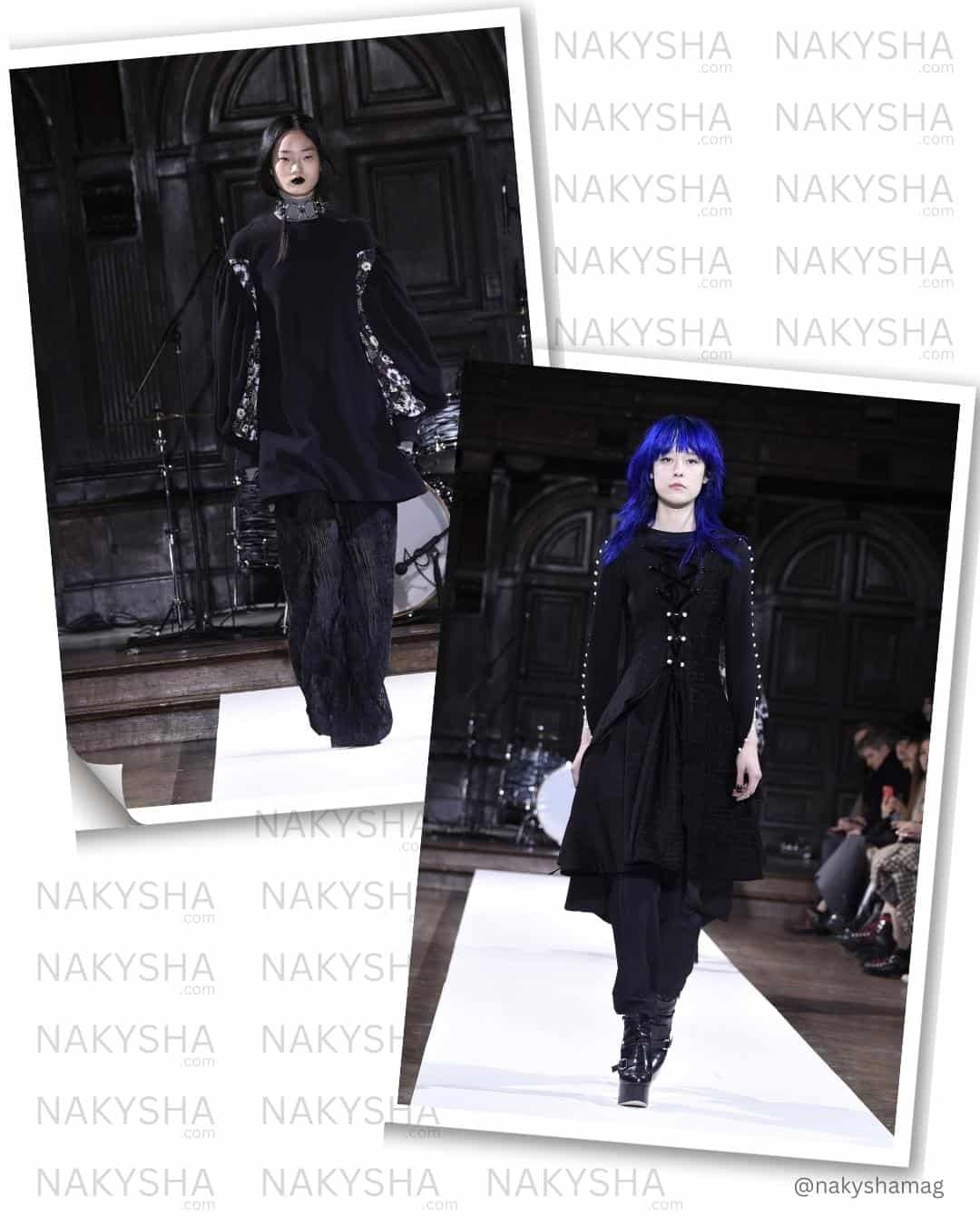
Gothic subculture is associated with a sense of community and belonging. Many individuals drawn to Gothic fashion are also drawn to the music, art, and literature associated with the Gothic subculture. This sense of connection and shared identity can be a powerful motivator for many people.
Gothic fashion has been embraced by many designers and fashion houses, who have incorporated elements of the Gothic aesthetic into their collections. This has helped to bring Gothic fashion into the mainstream, making it more accessible and appealing to a broader audience.
This style has continued to evolve, incorporating new influences and trends while remaining true to its roots. This adaptability and versatility have helped to keep Gothic fashion relevant and popular, even as trends come and go.
The enduring popularity of Gothic fashion can be attributed to its unique and expressive qualities, its association with a sense of community and shared identity, and its ability to evolve and adapt over time.
The Evolution of Gothic Fashion
The Gothic fashion style has evolved significantly since its origins in the late 1970s, as it has been influenced by a range of different factors, including music, art, and popular culture.
In the early days of the Gothic subculture, Gothic fashion was characterized by a DIY aesthetic. Individuals created their clothing and accessories from second-hand items and thrift store finds. The punk movement heavily influenced the style and was often characterized by ripped clothing, studded leather jackets, and spiky hairstyles.
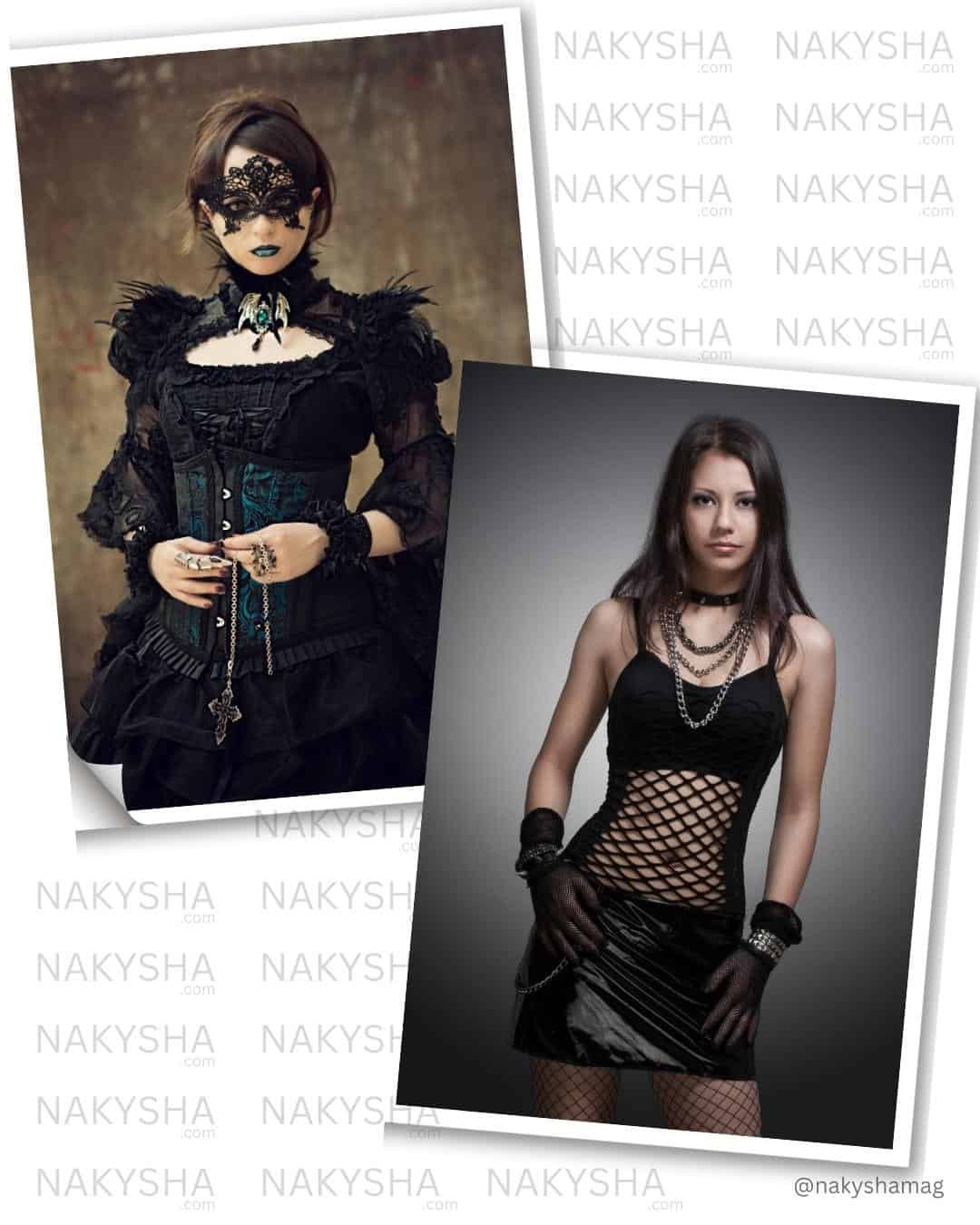
During the 1980s, Gothic fashion became more elaborate and ornate as individuals began incorporating medieval and Victorian clothing elements into their outfits. Corsets, lace, and flowing skirts became popular, as did heavy makeup and dark, dramatic hairstyles.
In the 1990s, Gothic fashion was influenced by the rise of industrial music, which led to a more futuristic and cyberpunk-inspired aesthetic. Clothing made from PVC, latex, and other unconventional materials became popular, as did neon hair colors and cybernetic accessories.
Since the turn of the 21st century, Gothic fashion has continued to evolve, with new influences from pop culture and fashion trends. Steampunk-inspired clothing, Gothic Lolita fashion from Japan, and modern interpretations of Victorian and Edwardian clothing have all become popular among Gothic fashion enthusiasts.
Today, Gothic fashion is a diverse and eclectic style that draws inspiration from a range of different sources. It continues to evolve and adapt to new trends and influences while remaining true to its roots in the Gothic subculture.
What are the Characteristics of Gothic Fashion?
The Gothic fashion style is known for its distinctive and alternative look, which incorporates a range of different elements to create a unique and striking appearance.
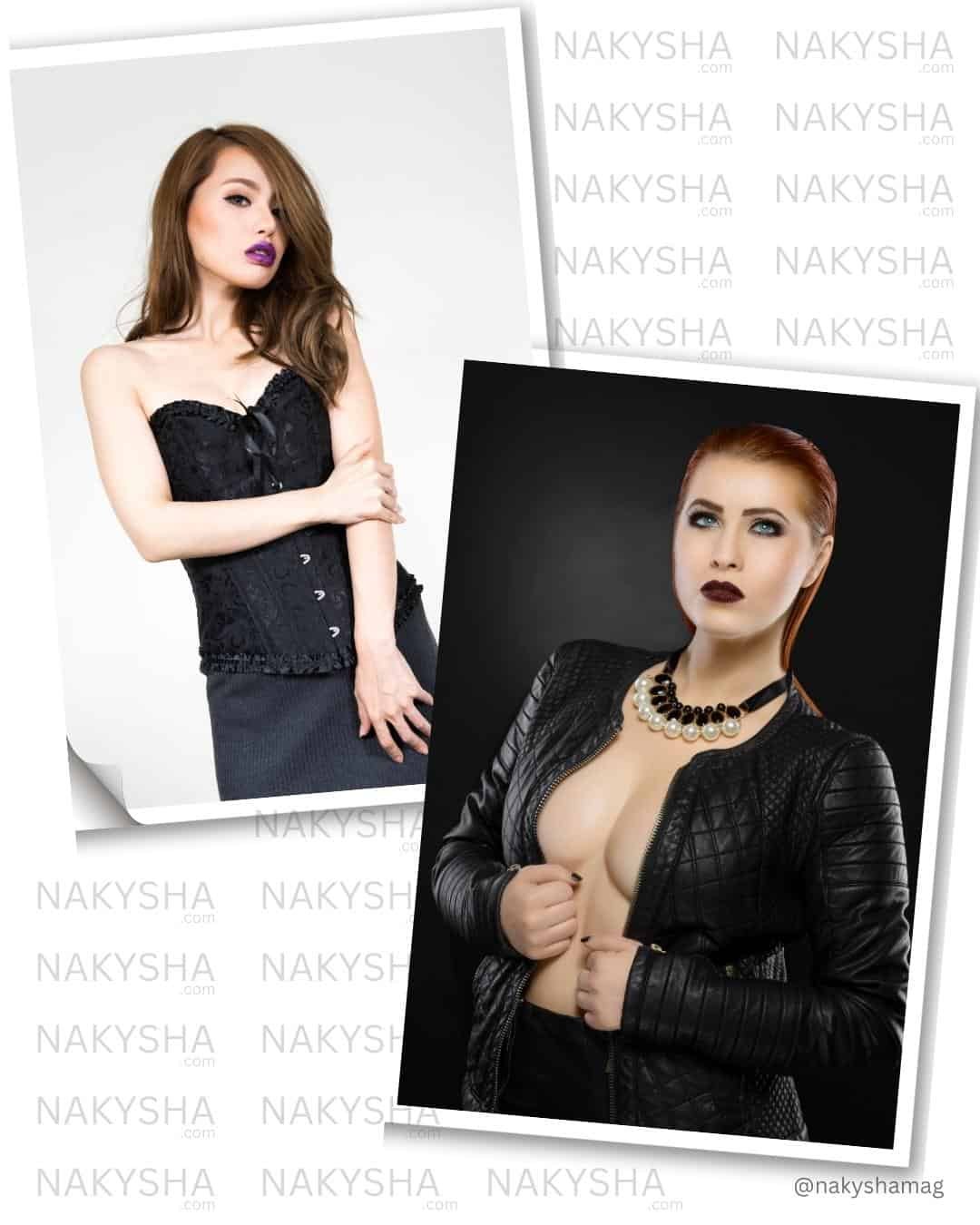
Some of the critical characteristics of Gothic fashion include:
- Dark colors: Gothic fashion is often characterized by black, with other dark colors such as deep purple, dark green, and burgundy also being popular. These colors are used to create a sense of mystery and drama.
- Dramatic makeup: Gothic makeup often features heavy eyeliner, dark lipstick, and pale foundation, which create a dramatic and striking appearance.
- Ornate clothing: Gothic clothing is often elaborate and ornate, with intricate details such as lace, embroidery, and beading. Corsets, flowing skirts, and Victorian-inspired dresses are common in Gothic fashion.
- Leather and metal: Gothic fashion often incorporates leather, metal, and other unconventional materials, such as PVC and latex. Chains, studs, and spikes are also standard accessories.
- Accessories: Gothic fashion is often accessorized with jewelry, such as chokers, silver rings, and earrings. Hats, gloves, and scarves are commonly worn to complete the look.
- Hair: Hairstyles in Gothic fashion often feature dark and dramatic styles, such as black, red, or purple hair colors, and style in a teased or unkempt manner.
The Gothic fashion style is characterized by its dark and dramatic appearance, focusing on elaborate and ornate clothing, makeup, and accessories. This style allows individuals to express their individuality and creativity while embracing a sense of alternative and subculture aesthetics.
The Colors of Gothic Fashion
The colors of Gothic fashion are typically dark and dramatic, with black being the most commonly associated color. However, other dark shades are often used to create a striking and mysterious appearance. Some of the most popular colors in Gothic fashion include:
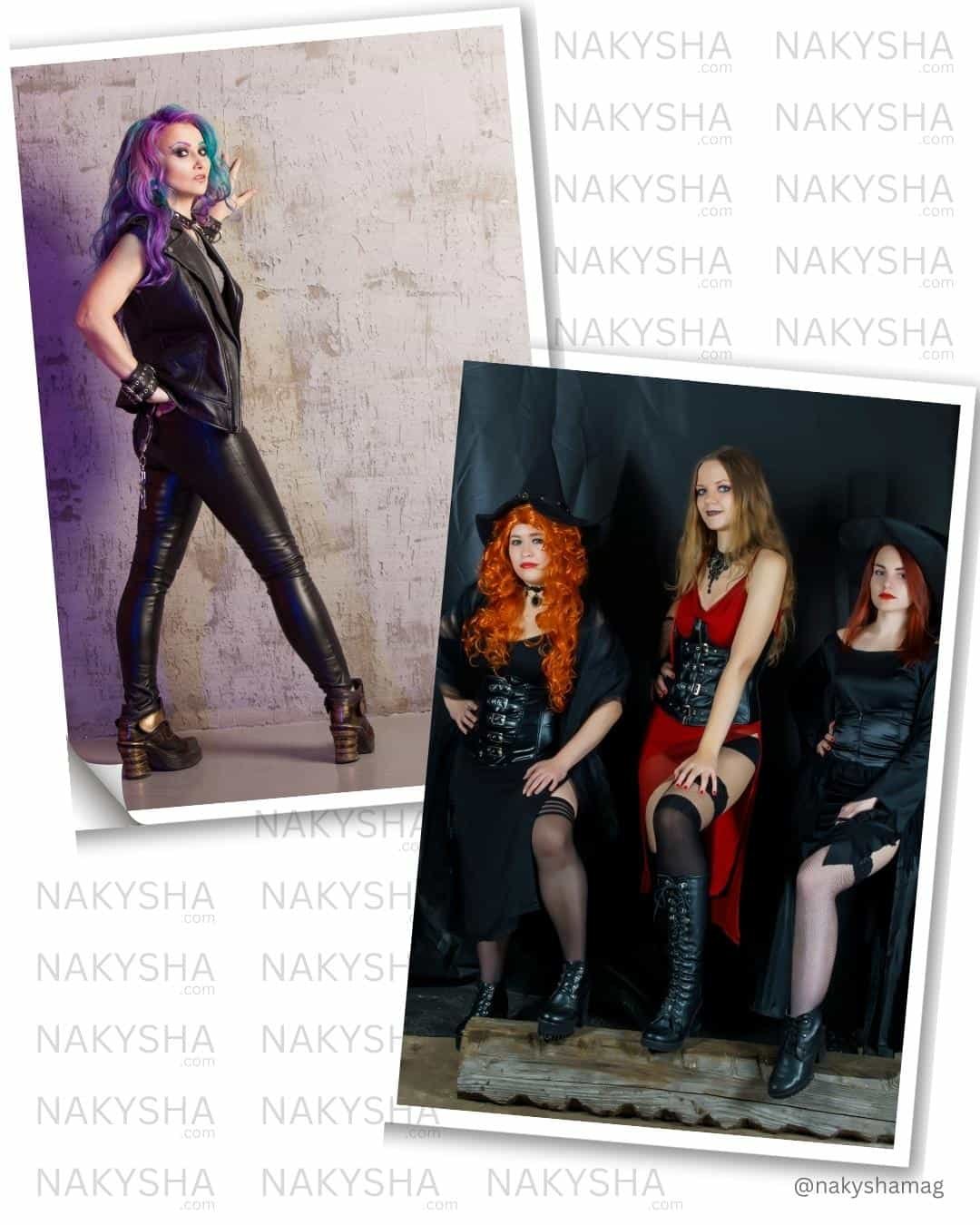
Black is the dominant color in Gothic fashion, representing the dark and moody atmosphere associated with the Gothic subculture. It is used for clothing, accessories, and makeup and can be paired with a range of different colors for contrast.
Dark red, or burgundy, is another popular color in Gothic fashion. It is often used as an accent color for clothing, makeup, and accessories, adding a sense of richness and depth to an outfit.
Deep purple is often associated with royalty, making it a popular choice for Gothic fashion. It is used to add a sense of elegance and sophistication to an outfit.
Dark green is another color commonly used in Gothic fashion. It can create a sense of mystery and depth and is often paired with black for a striking contrast.
Grey is a more subtle color in Gothic fashion, but it can be used to create a sense of darkness and foreboding. It is often paired with black or dark colors for a muted, understated look.
The colors of Gothic fashion are used to create a dark and dramatic appearance that reflects the moody and mysterious atmosphere associated with the Gothic subculture. While black is the dominant color, other dark shades such as dark red, deep purple, dark green, and grey are also commonly used.
How to Dress in Gothic Style?
Are you looking to create your gothic-style look? Don’t worry. We got you covered.
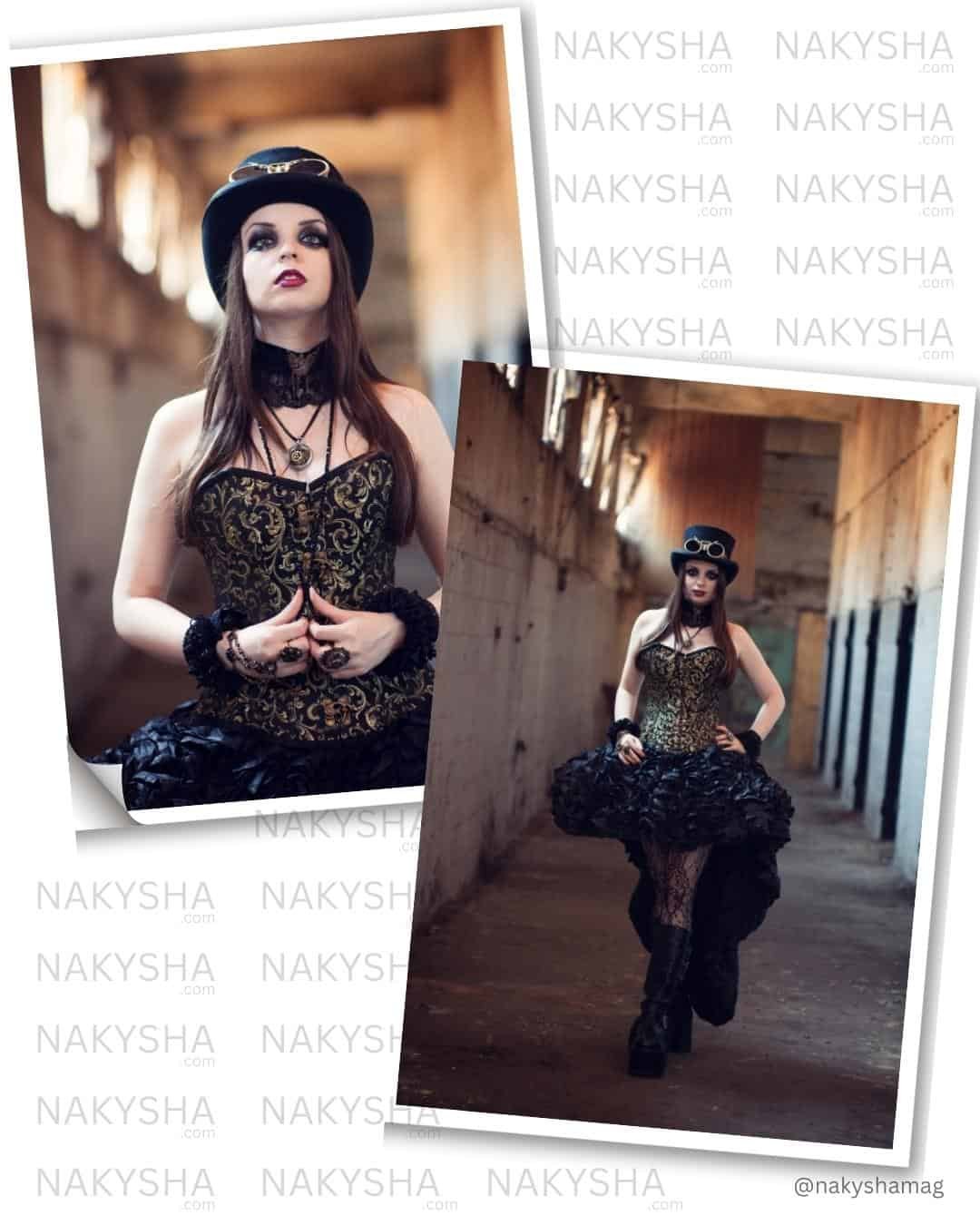
Here are some tips to help you achieve the look:
Choose dark clothing: Start by choosing clothing in dark colors such as black, dark red, deep purple, and dark green. Opt for clothing with a lot of texture, such as lace, velvet, or leather.
Accessorize with Gothic jewelry: Accessorize your outfit with Gothic-style jewelry, such as chokers, silver rings, and dangly earrings. Look for ornate, elaborate pieces with intricate details like skulls, crosses, and gemstones.
Wear dramatic makeup: Gothic makeup typically features dark eyeliner, pale foundation, and dark lipstick. Experiment with different styles to find a look that works for you.
Choose the proper footwear: Gothic fashion often features boots or shoes with a dramatic flair, such as platform boots, combat boots, or stiletto heels. Choose footwear that complements your outfit and adds to the overall Gothic aesthetic.
Add layers: Layering is a crucial element of Gothic fashion, so don’t be afraid to mix and match different fabrics and textures. Pair a flowing skirt with a corset, or layer a lace top over a tank top.
Accessorize with Gothic-style hats and gloves: Finish off your Gothic outfit with accessories like hats, gloves, and scarves. Look for pieces with Gothic-inspired details like lace, buckles, and studs.
Gothic fashion is all about expressing your individuality and creativity. Don’t be afraid to experiment with different styles and looks until you find one that works.
Gothic Fashion Outfits
Gothic fashion outfits are characterized by their dark, dramatic aesthetic, often associated with horror, death, and romance themes. Gothic fashion outfits typically feature dark colors like black, red, and purple and bold patterns like lace, velvet, and leather.
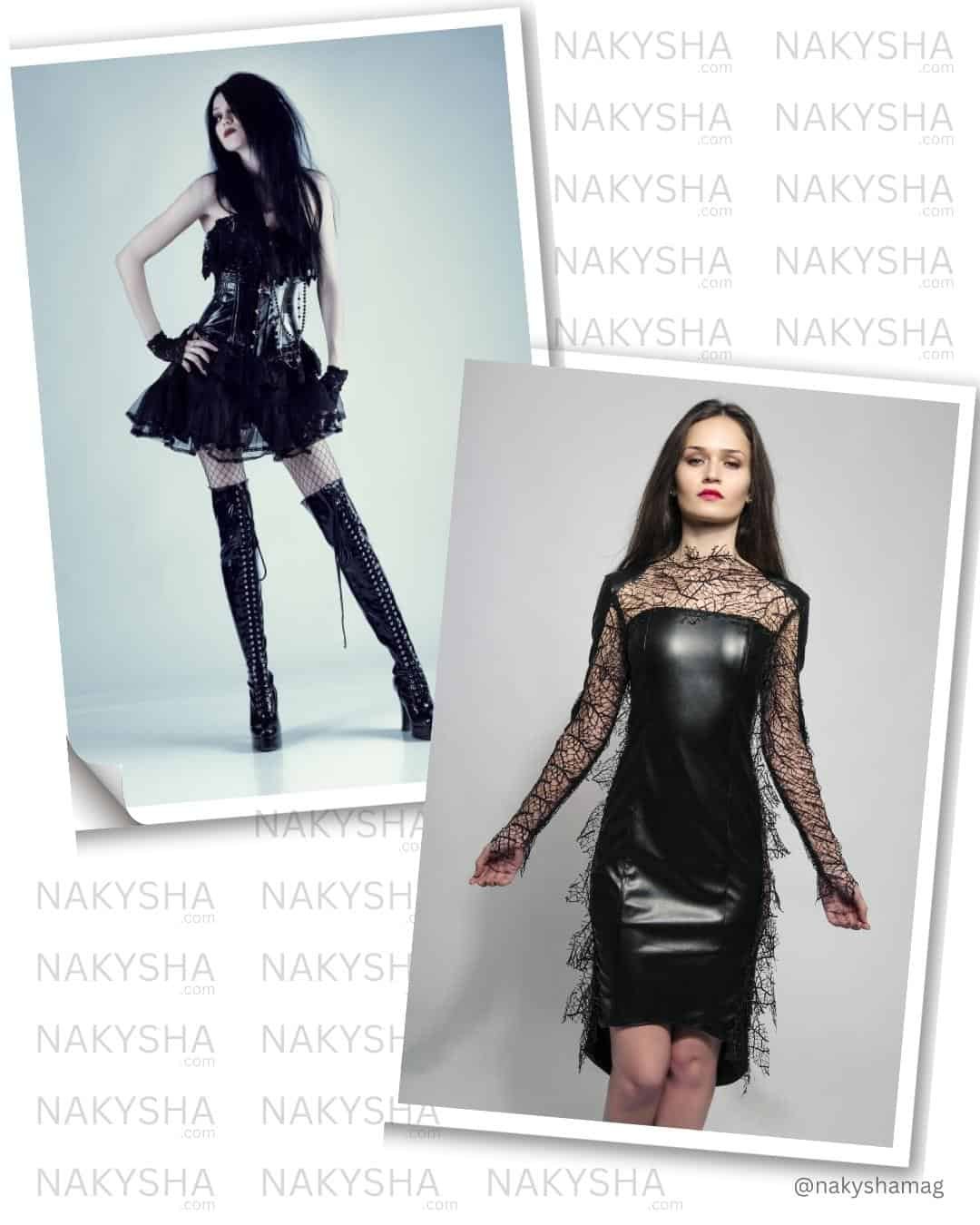
Some common elements of gothic fashion outfits include corsets, leather jackets, fishnet stockings, black boots, and heavy jewelry such as chokers and bracelets. Other accessories may include sunglasses, gloves, and hats, all designed to create a dark, mysterious, and dramatic look.
Gothic fashion outfits are often worn by those who identify with the Gothic subculture or enjoy the aesthetic. They can be worn for a variety of occasions, from casual outings to formal events, and can be adapted to suit individual tastes and styles.
Gothic Fashion Makeups
Gothic makeup is usually made up of dark, bold, and often contrasting colors. The eyes are usually highlighted to make a dramatic, high-contrast look.
Gothic fashion makeup is about making a dark, dramatic, and eye-catching look, like the Gothic subculture.
A porcelain-like complexion is often a hallmark of gothic makeup. Bold, dark lipstick shades, such as black, burgundy, and deep red, are popular choices in gothic makeup.
Dark, smoky eye makeup is another gothic staple, often featuring black, charcoal, dark purple eyeshadow, and heavy eyeliner.
Contouring techniques to create sharply defined cheekbones are also familiar in gothic makeup.
For a more dramatic and eye-catching look, some gothic makeup styles may incorporate glitter or metallic accents around the eyes or lips.
Gothic Fashion Hairstyles
Gothic fashion hairstyles typically incorporate elements of punk and alternative fashion. Try new hairstyles to create a unique, edgy look that suits your personality and style.
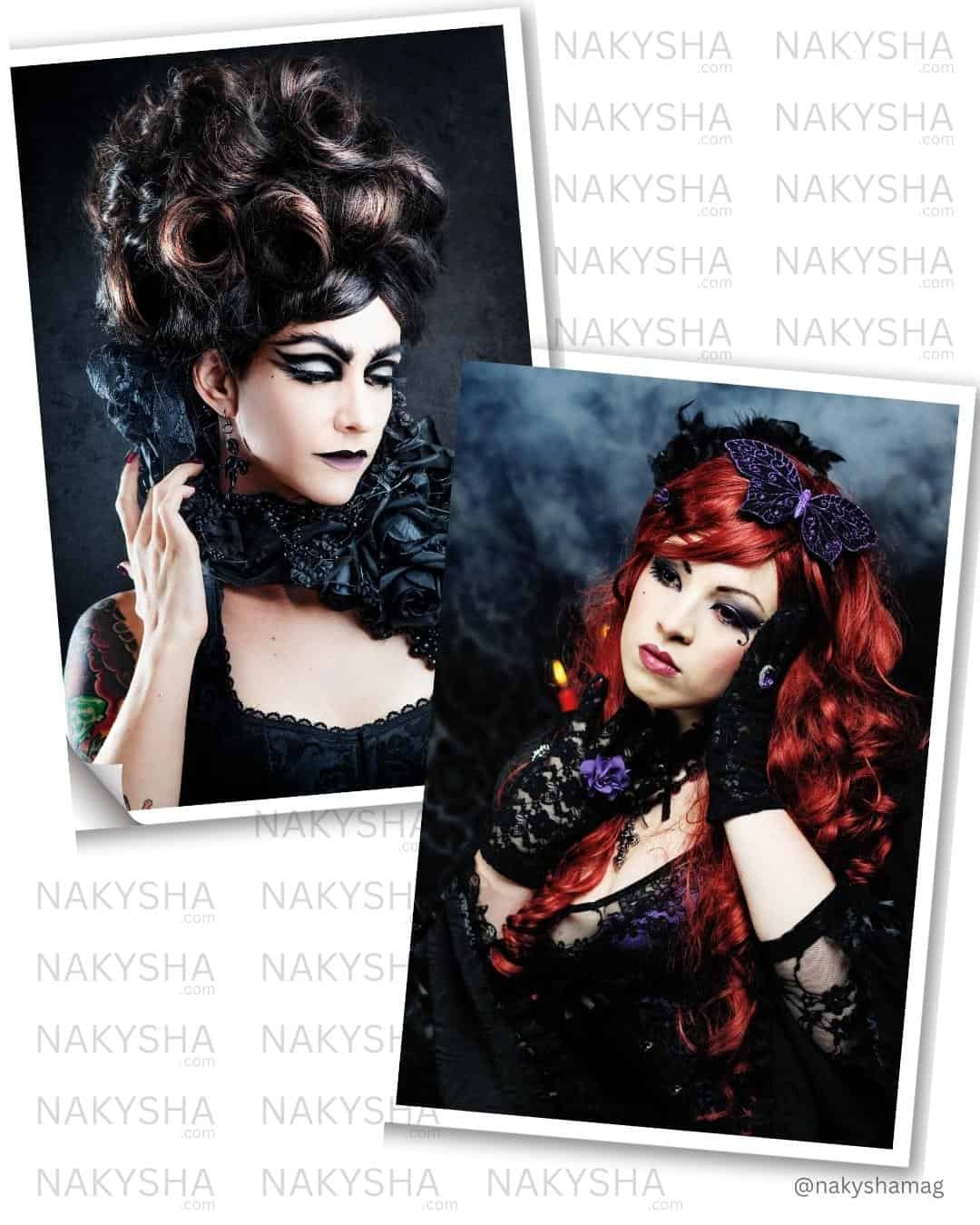
- Gothic hairstyles often feature dark hair colors like black, dark brown, or burgundy.
- Gothic hairstyles often incorporate texture, such as messy, tousled hair or intricate braids. Consider using hair wax or texturizing spray to add volume and texture to your hair.
- Gothic hairstyles can be complemented with a range of hair accessories such as studded headbands, chains, and hair clips. These can add a punk-inspired touch to your overall look.
- Asymmetrical hairstyles can add a unique and edgy touch to your Gothic look, with one side of the hair cut shorter than the other.
- Dramatic updos, such as a high top knot or a braided crown, can add a touch of elegance to your Gothic fashion hairstyle.
Gothic Fashion Accessories
Gothic fashion is known for its unique and distinctive style, often including dark clothing, dramatic makeup, and edgy accessories. Some of the most common Gothic fashion accessories include:
Chokers: These are popular Gothic leather, velvet, or metal accessories. They are often adorned with spikes, studs, or other dark embellishments.
Spiked jewelry: Spikes are a common theme in Gothic fashion, and spiked jewelry can be worn as a statement piece or to add edge to an outfit. This can include bracelets, necklaces, and earrings.
Fishnet stockings: Fishnet stockings are a staple of Gothic fashion and are often worn under short skirts or shorts. They can also be layered with other hosiery, such as ripped tights or leggings.
Leather gloves: Leather gloves are a versatile accessory in Gothic fashion and can be worn with a variety of outfits. They are often studded or embellished with metal hardware.
Top hats: Top hats are a popular accessory for both men and women in Gothic fashion. They are often adorned with ribbons, feathers, or other dark decorations.
Corsets: Corsets are a classic Gothic accessory that can be worn as part of a formal outfit or as a standalone piece. They can be made from a variety of materials, including leather, velvet, and lace.
Buckles and straps: Buckles and straps are a common theme in Gothic fashion and can be found on boots, jackets, and other accessories. They are often adorned with metal hardware and studs.
Cross jewelry: Crosses are a popular symbol in Gothic fashion and can be worn as jewelry, including necklaces, earrings, and bracelets.
Rings: Rings are a popular accessory in Gothic fashion and can be made from a variety of materials, including silver, black metal, and bone. They often feature dark and macabre designs.
Eyewear: Dark sunglasses or glasses with bold frames are a popular accessory in Gothic fashion. They can be worn as a statement piece or to complete an outfit.

